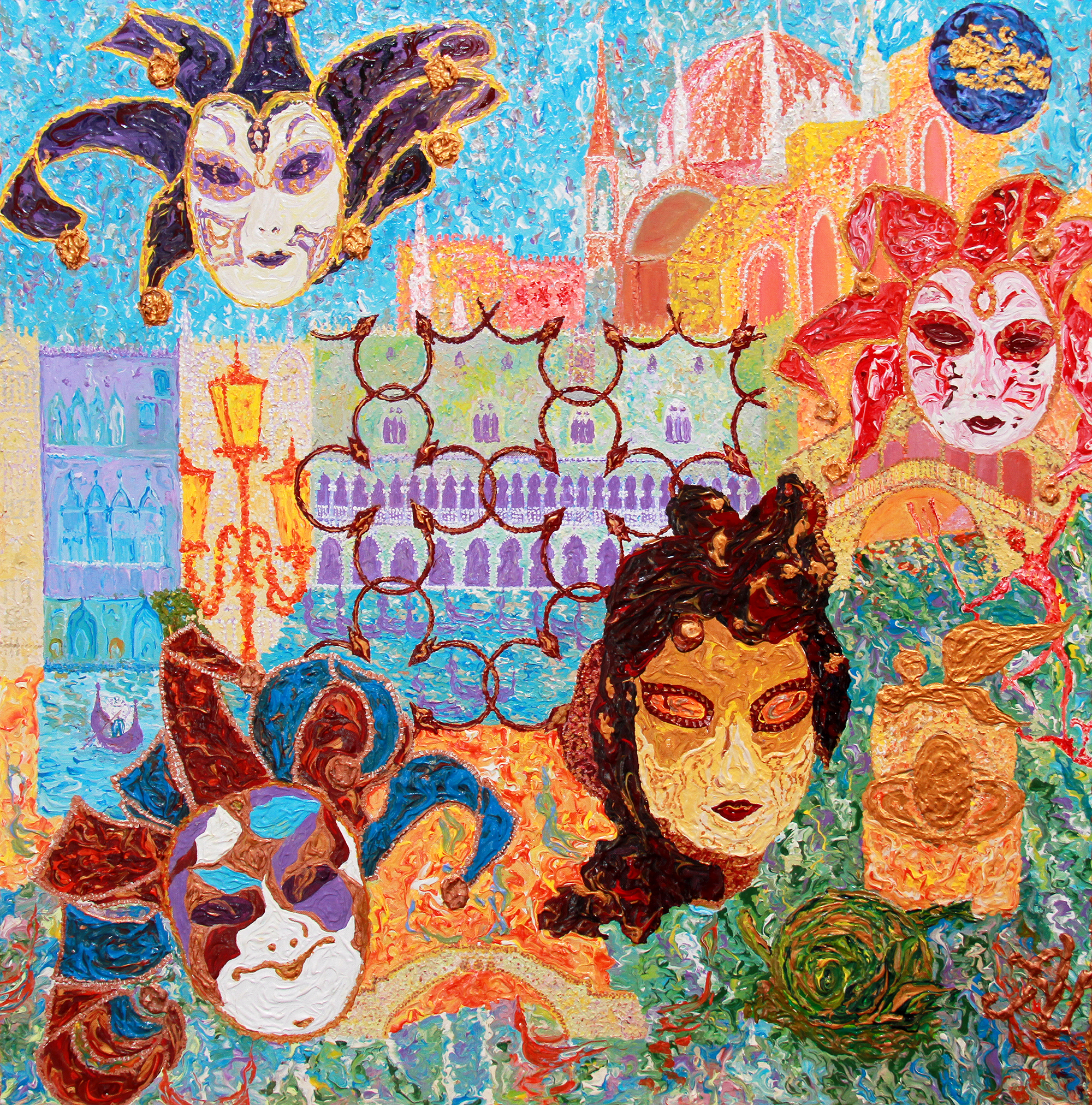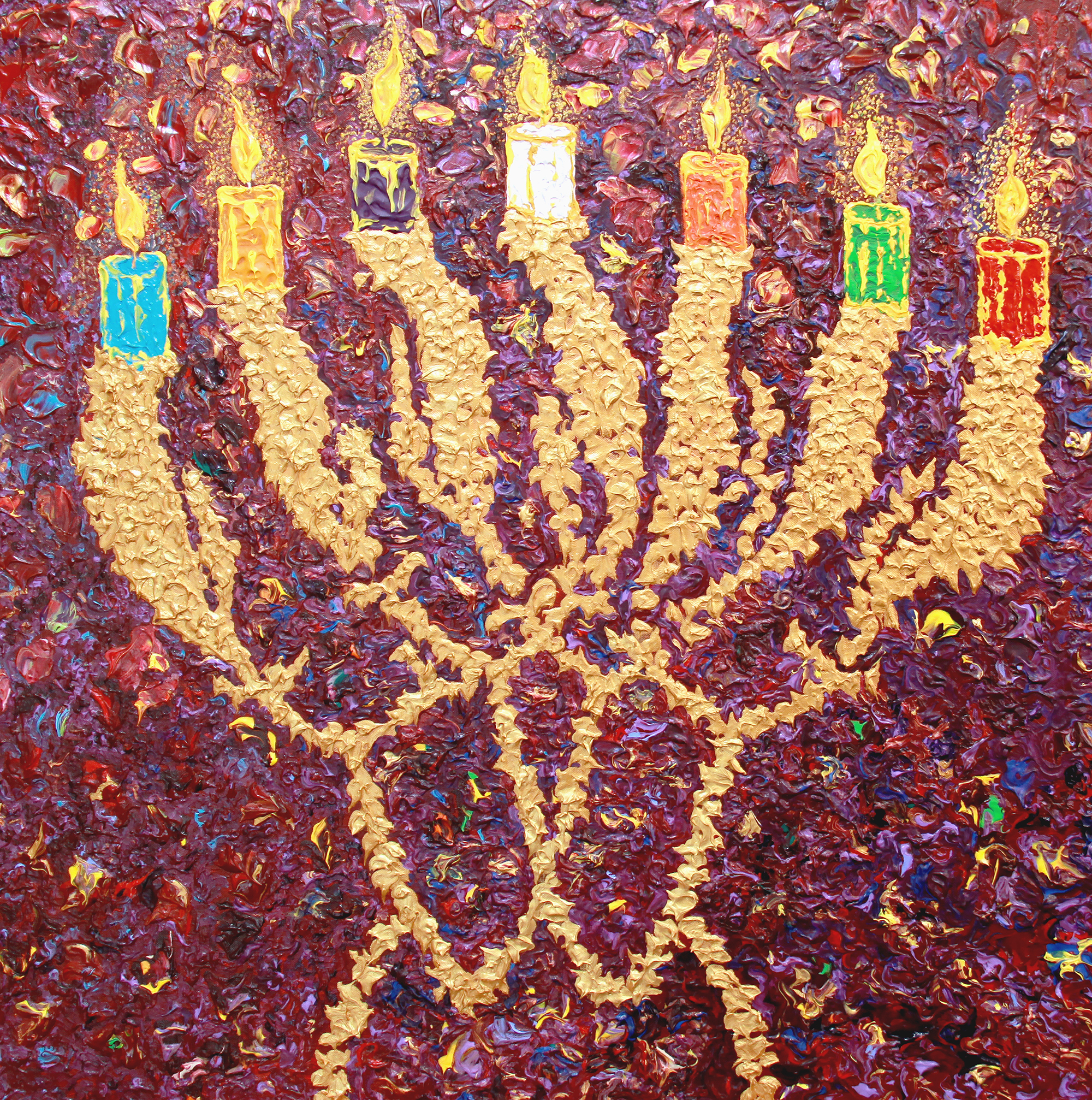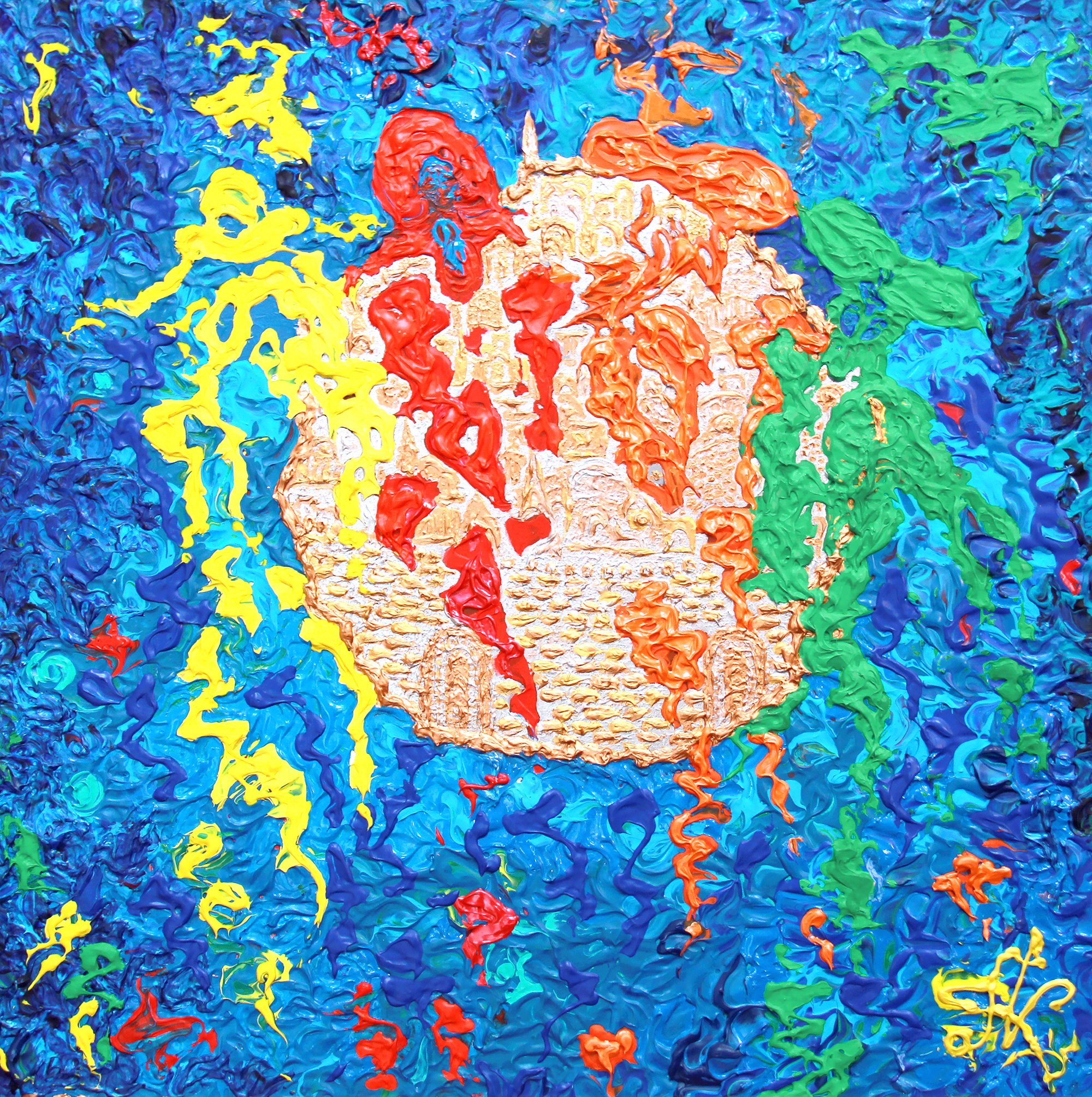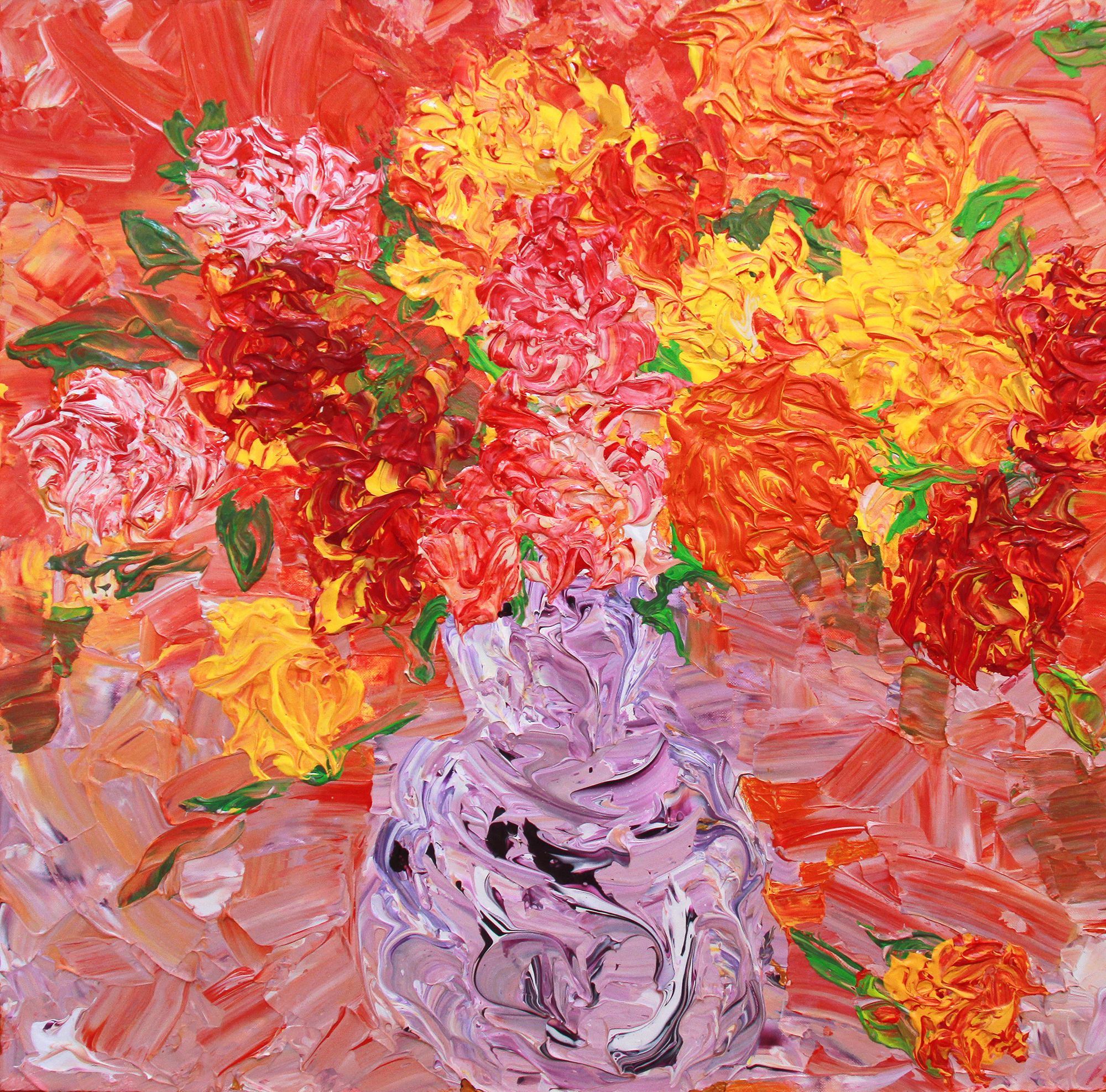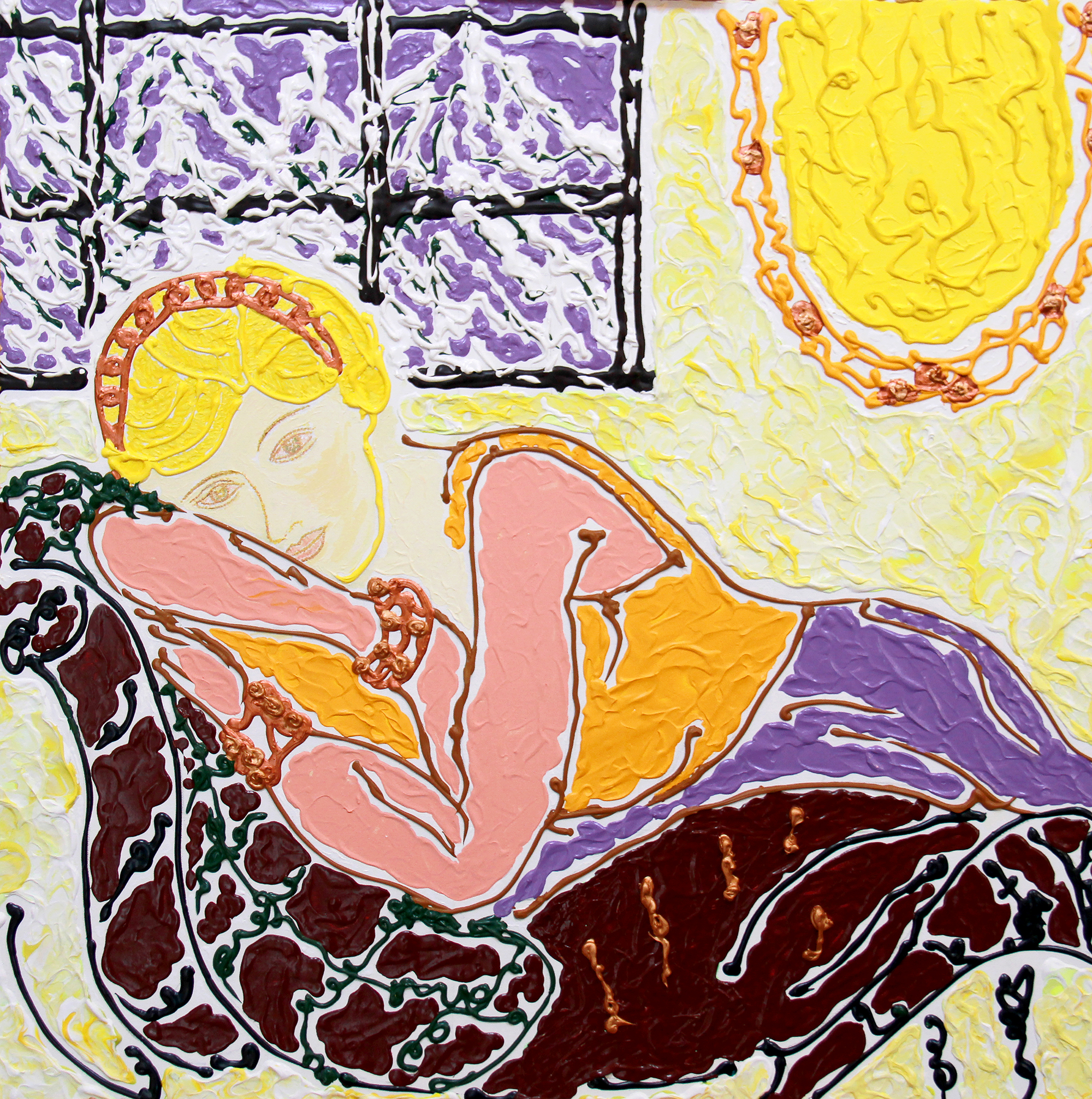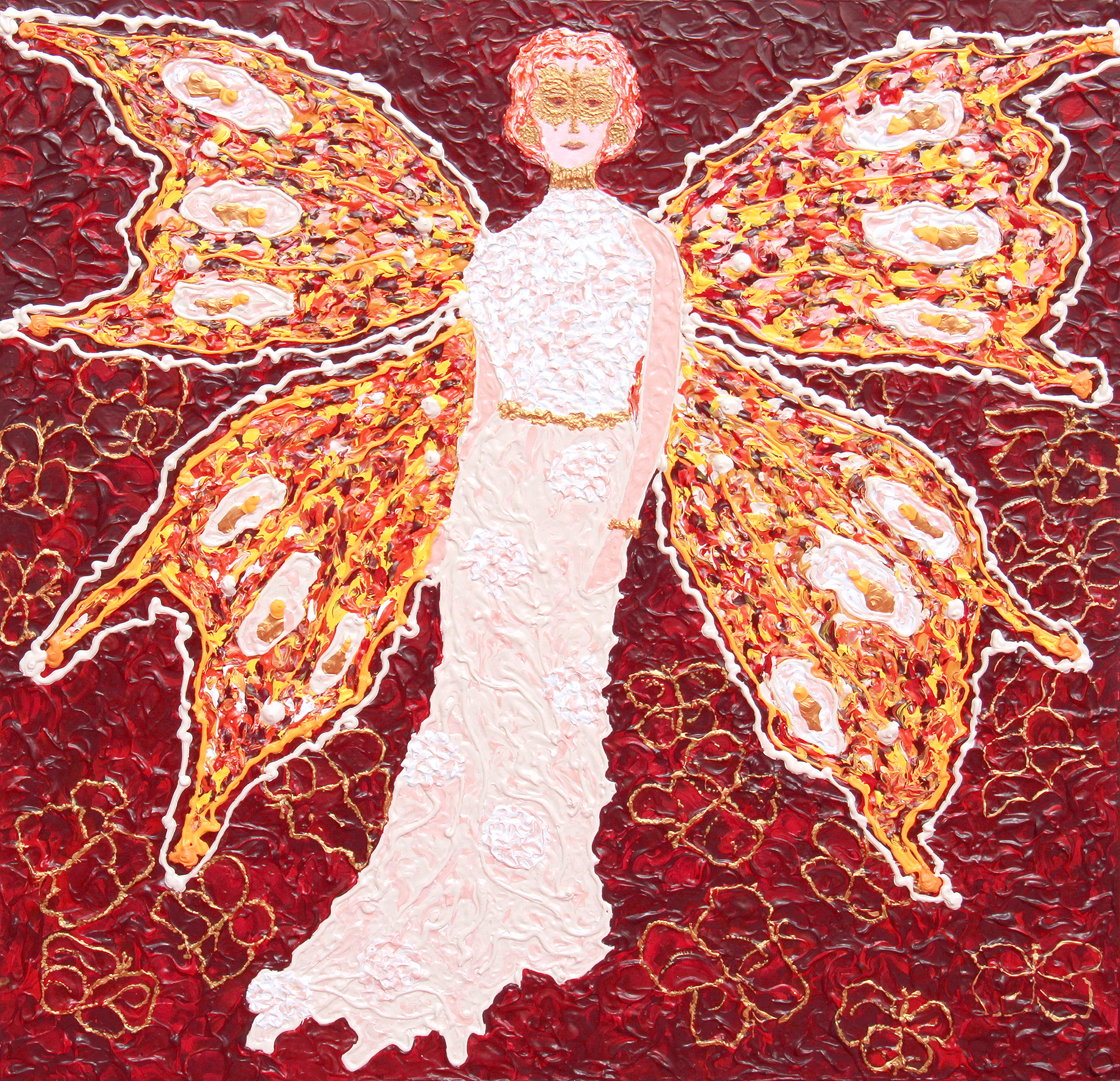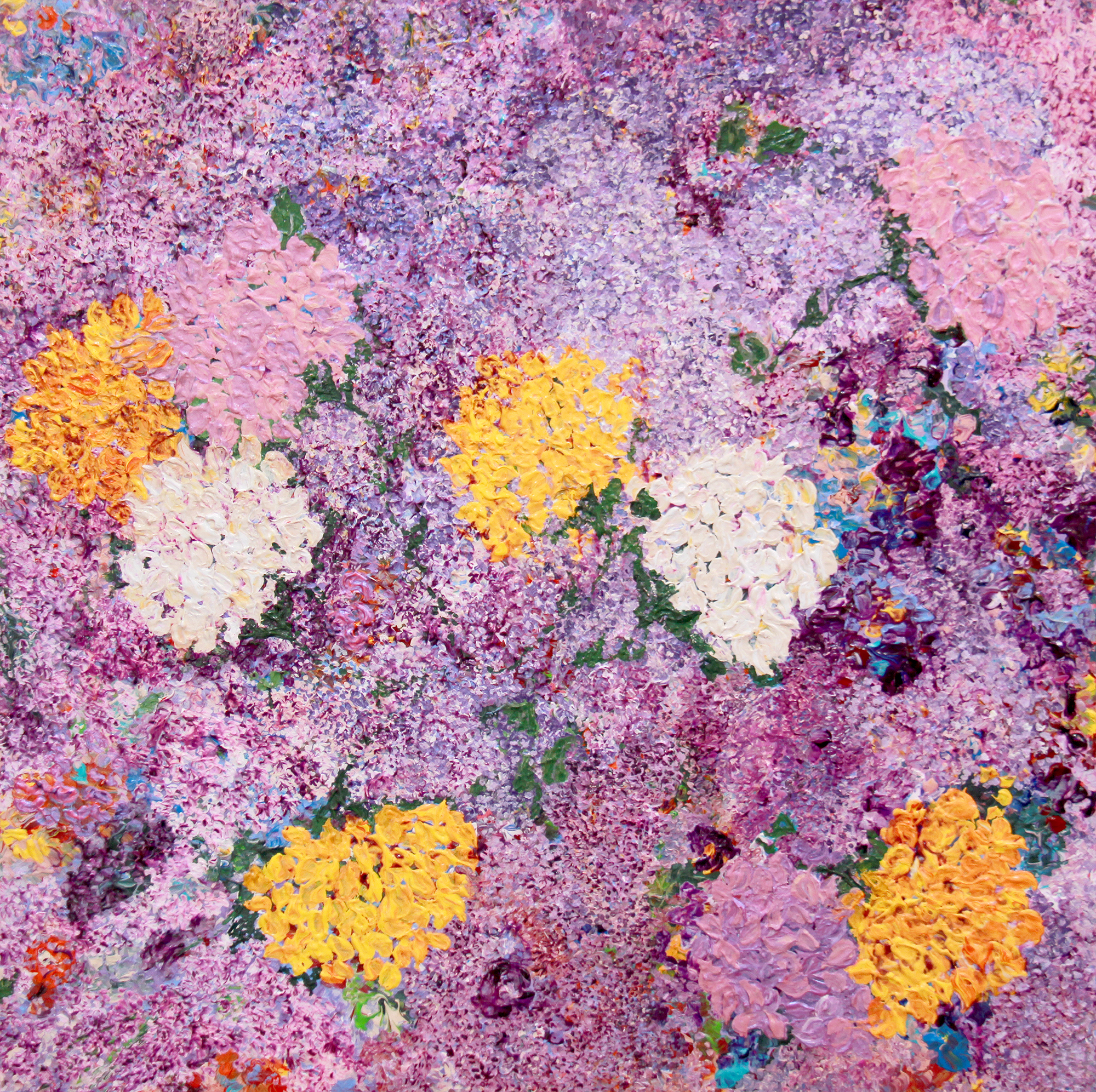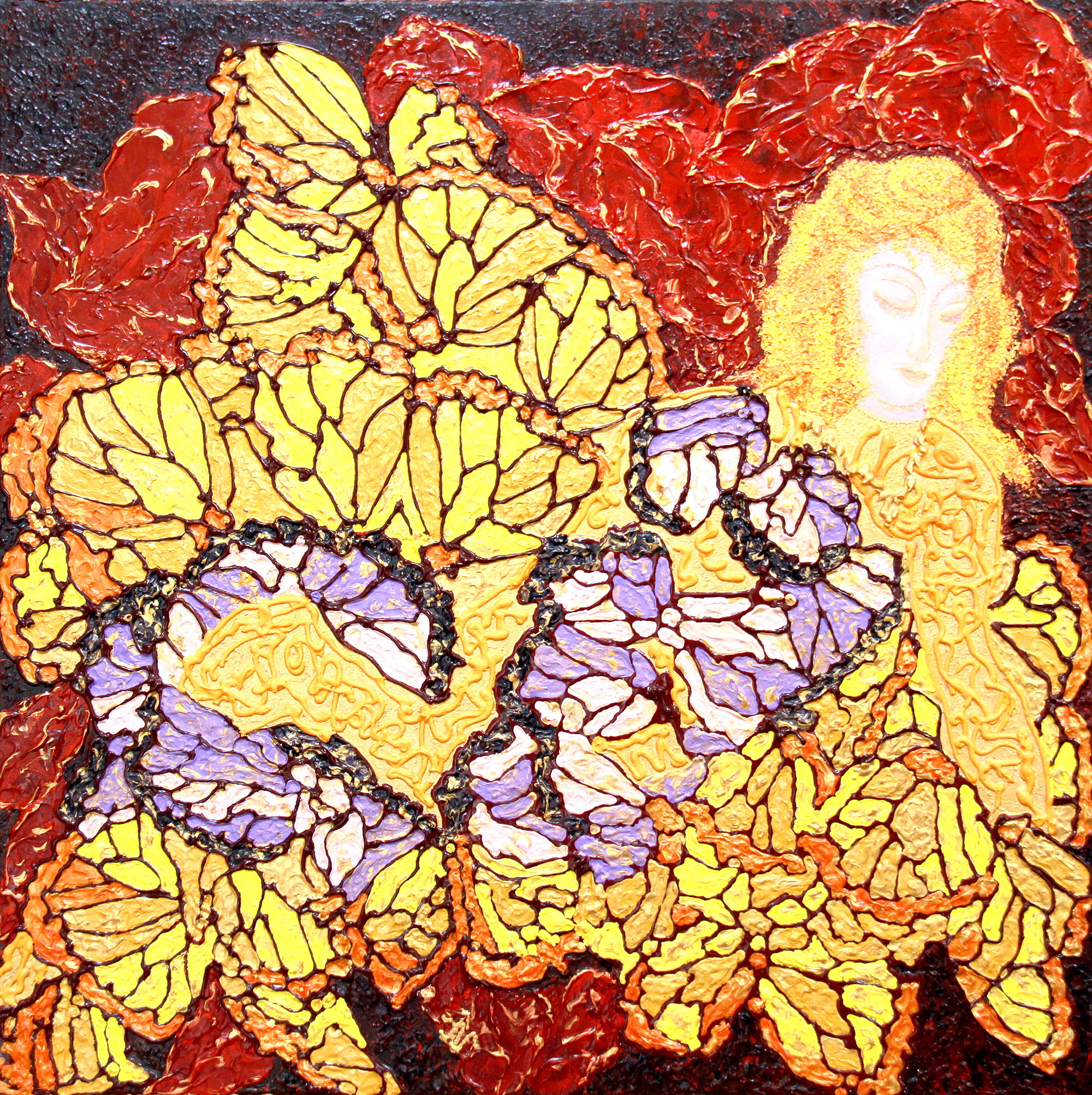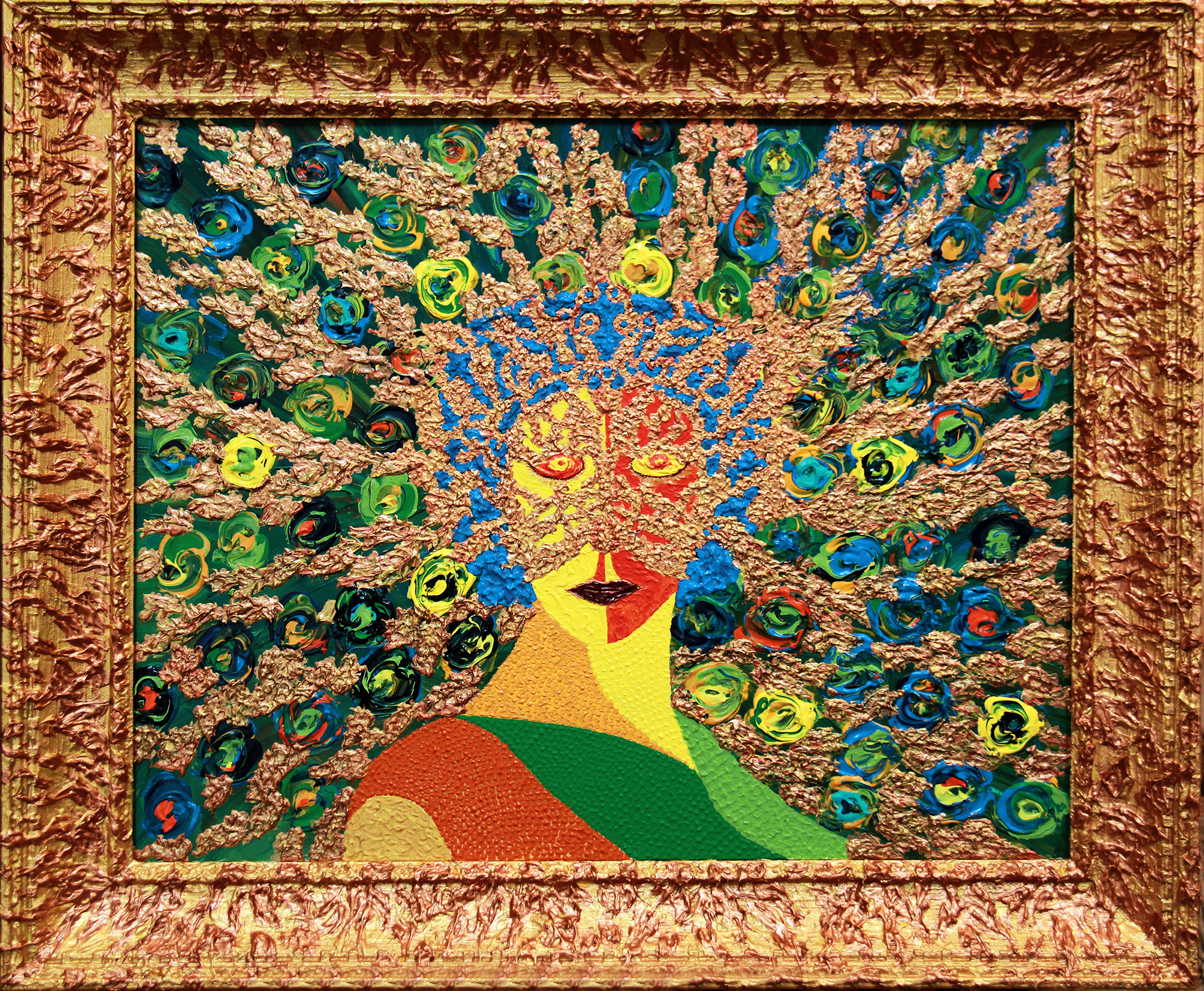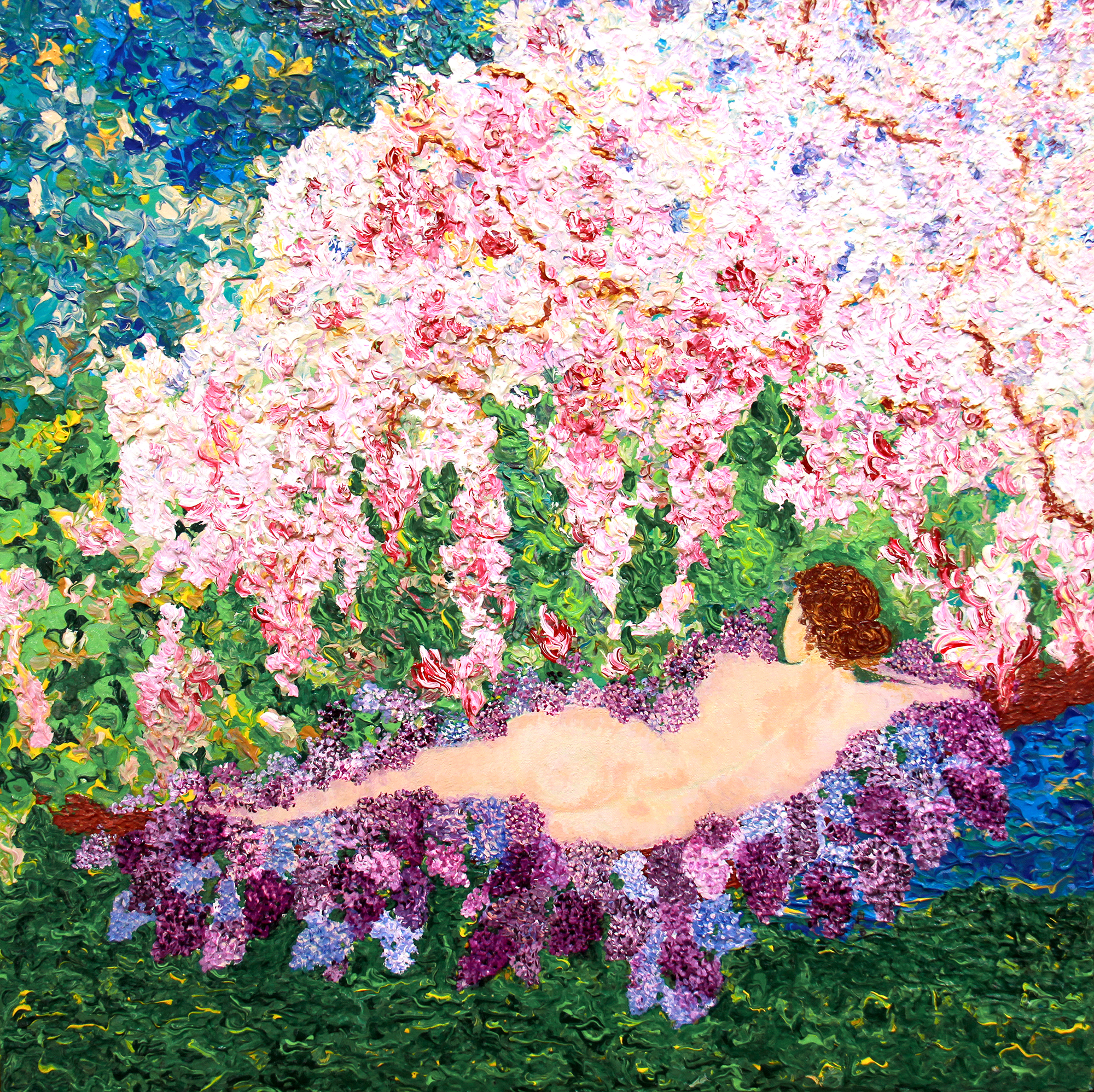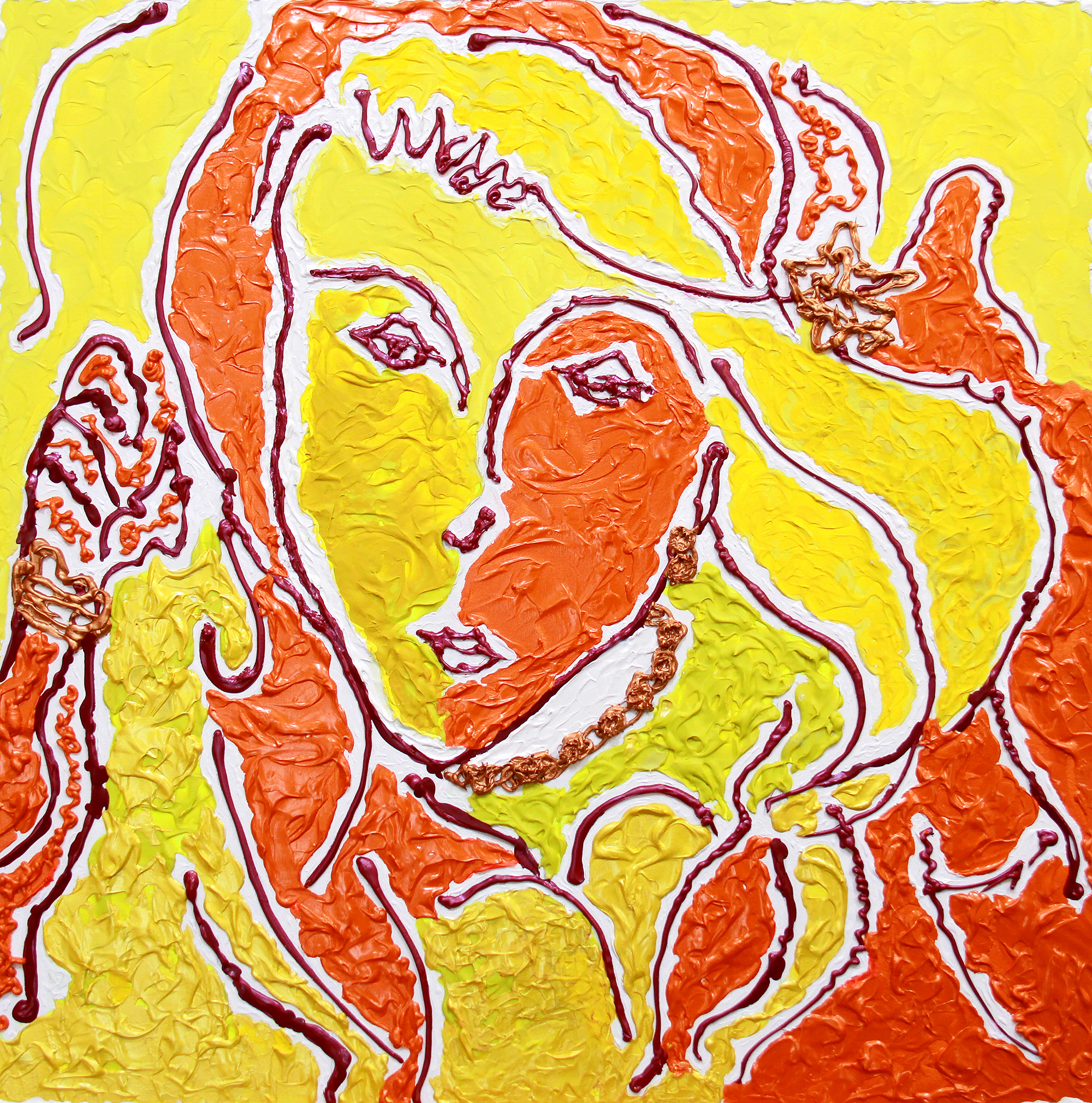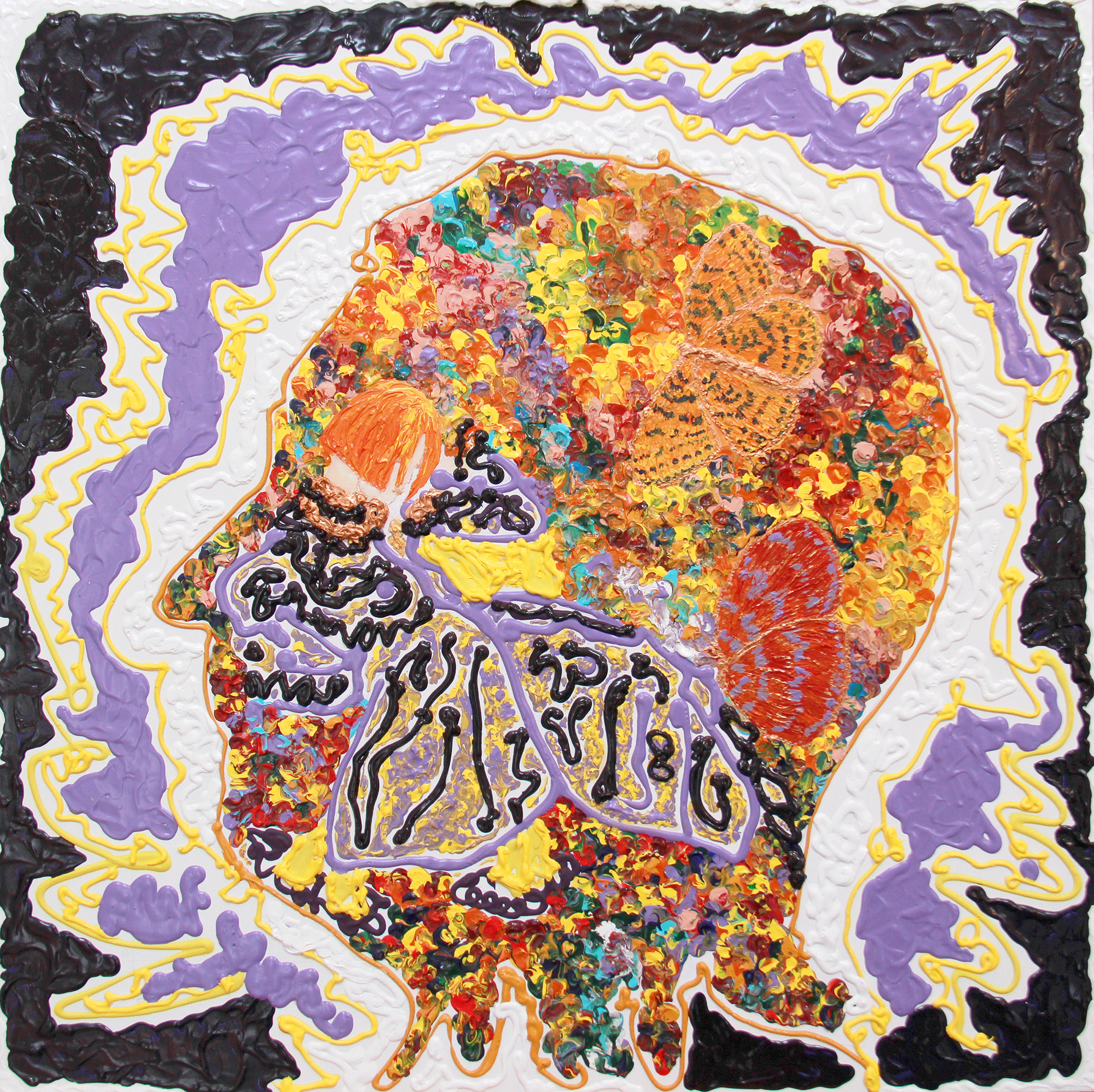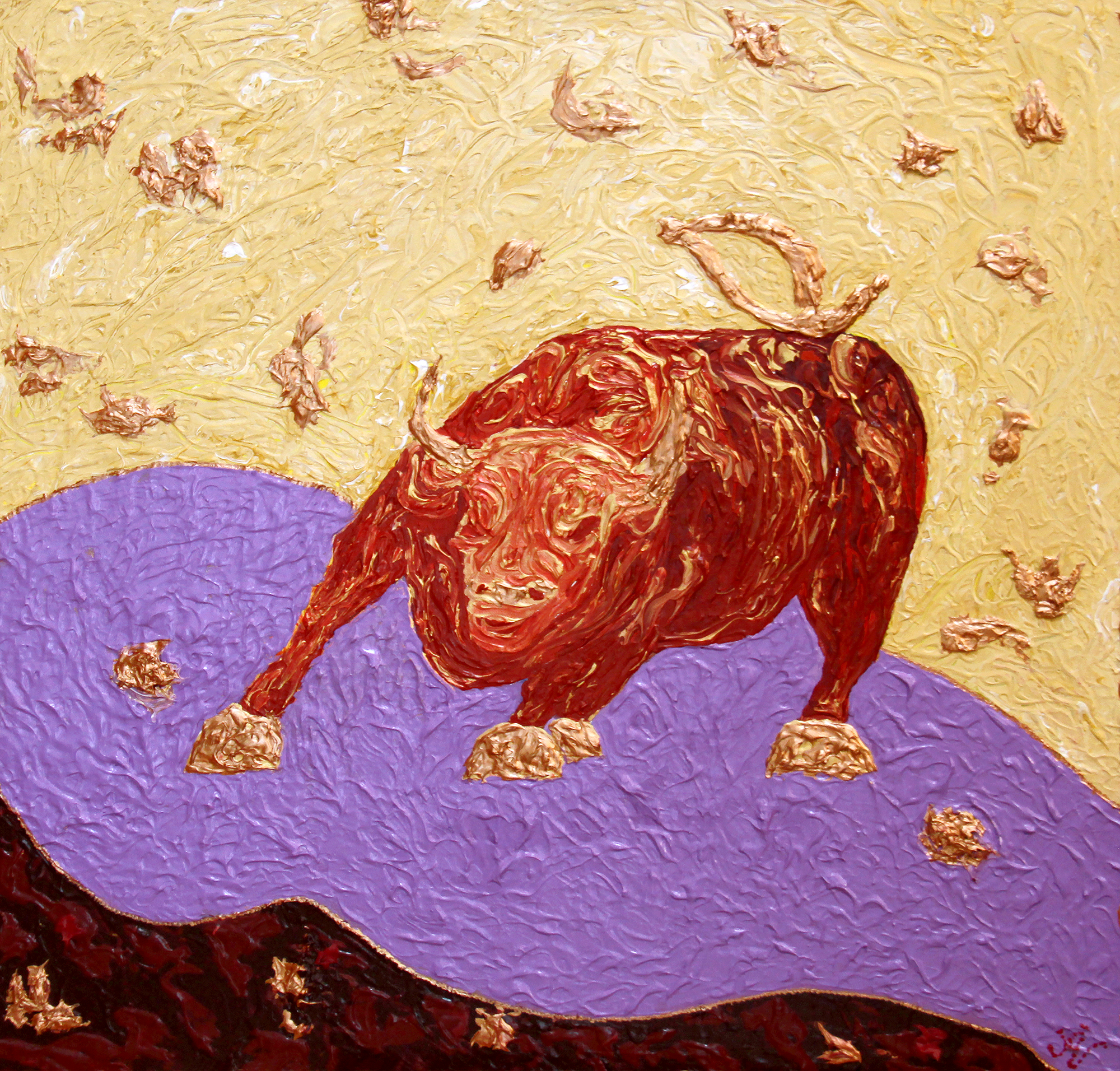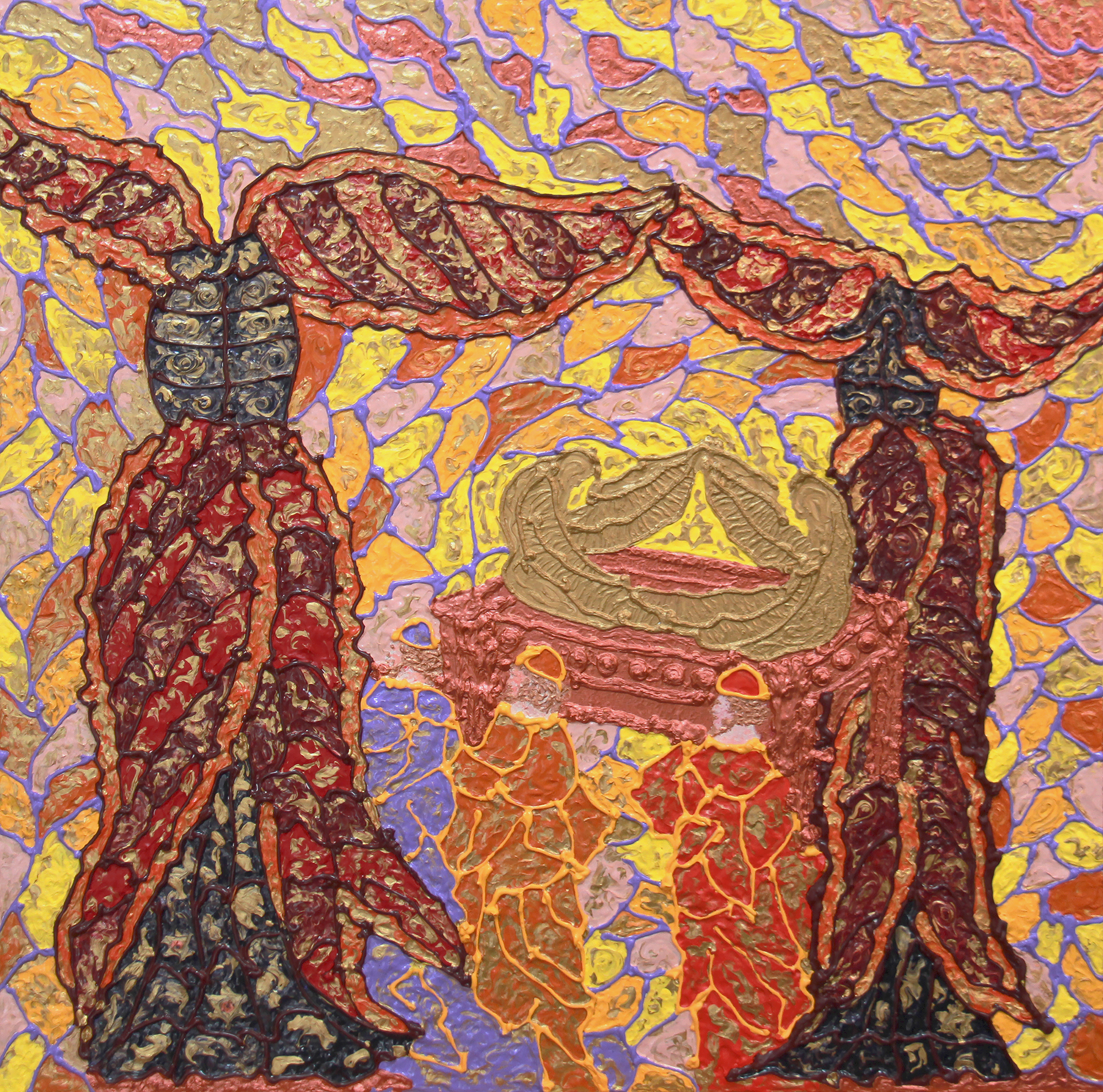Aleksandr Vishnevetskiy
Colors of the world and beyond
Robert Harris Rothchild, Art Collector, Art Historian, Art Connoisseur
Aleksandr Vishnevetskiy is an artistically talented individual who enjoys both writing poetry and creating visually beautiful paintings. The artist likes to intermix his poetry with his visual art in his catalogues. He was born in Kiev in the Ukraine, but he has been residing in the United States for the past 22 years. He currently lives happily with his family in New Jersey.
Mr. Vishnevetskiy enjoys thinking about, talking about and especially the process of creating, his paintings. This joy of painting is evidenced in most of the artist’s work by the heavy emphasis on the texture of the paint, the prominence of the brushwork, the intermingling of brilliant colors in his palettes, and the lavish use of the color gold in many of the paintings.
Important artistic influences are discovered when we examine Mr. Vishnevetskiy art. Gustav Klimt and his prolific use of the color gold is referenced, but perhaps even more important are Klimt’s flattening of the picture space, mosaic-like decorative backgrounds, overall abstraction of forms, and the contrasting of a more realistically rendered face with the very elaborate decorative backgrounds. Each of these characteristics are exhibited in various paintings by Mr. Vishnevetskiy; he often paints a face or a body with thinner paint and flatter brushwork in contrast to the heavy impasto and energetic brush strokes surrounding the face or form.
Aleksandr Vishnevetskiy art is characterized by a predominant tendency towards the abstraction of form and space and by the use of a prevalent energetic textural brush stroke. Mr. Vishnevetskiy subject matter encompasses landscapes, floral and other still life pictures, colorful non-representational pictures, abstract figural paintings, and other abstract pictures such as umbrellas on the beach or a painting depicting some of the major sights of Venice juxtaposed with carnival masks. His subject matter has surrealistic elements, references to Kandinsky, Chagall-like dreamy floating images, Jewish iconography, and even some Pop Art references. Some of the landscapes and still life pictures are reminiscent of the color schemes of Monet and the brushwork and colors of Van Gogh.
Mr. Vishnevetskiy palette is variegated from picture to picture, but he seems happiest when he uses brilliant rich colors in combination with each other and then he juxtaposes them with a darker, but glowing, background of blues and greens. Gold is used as a rich, brilliant, warm color as it is slashed on top of and woven into the other colors in some of the paintings. The artist uses many different shades of gold in his paintings.
“Starry Night in New York City” is the title that I have given to a painting by Aleksandr Vishnevetskiy which is in my collection. The fact that the artist usually does not name his paintings causes one to think that the artist is primarily interested in the emotive effect of the picture and he does not want to encumber the viewer with a predisposed prejudice caused by a title. For example, by leaving this particular painting untitled, the viewer may immediately react to the dialogue or confrontation between the forces of nature and the monuments of man. Certainly, just as Vincent Van Gogh did in 1889, Vishnevetskiy is distorting form and employing color expressively to evoke emotional responses in the viewer. My purpose is not to compare the two “Starry Night” pictures, I mention the Van Gogh piece to show that Mr. Vishnevetskiy artistic choices are often referencing past masters.
The heavy impasto of acrylic paint that is applied energetically and freely to the canvas is characteristic of Aleksandr Vishnevetskiy style. The brushwork is quick and confident as it is applied in swirls, dabs, slashes, dots and strokes in a very painterly manner. The palette knife is also used to apply thick amounts of paint to the surface of the canvas. The painterly method of the application of the acrylic, the dynamic movement and patterning and directional changes of the brushwork, and the resulting variegated and fascinating texture are keystone elements not only of this scene, but also of the other paintings by this artist.
The colors of “Starry Night in New York City” are used to evoke emotions of wonderment and awe. The colors and the brushwork evoke energy, movement, excitement, drama, foreboding, and beauty which are some of the elements of life itself. The gold paint, that is liberally and lavishly slashed, dotted and stroked onto the lower foreground area and the reddish-brown buildings in the middle ground, is the pulse, the blood, the life-force of the city. The gold color is sumptuous and enriches the blues, lavenders and browns around it. The yellow and orange in the sky ignite the rich blue and navy and illuminate the top zone of the painting.
The colors and the brushwork are pleasing, emotive and structural in the composition of this painting. The forms and shapes of the large stars, the glowing buildings, the illuminated yellowish-green aura of light around the buildings, combine with the color and brush strokes to create a balanced harmonious composition which is characteristic of Mr. Vishnevetskiy paintings. The artist usually balances his compositions in a classical manner with a central focal point and a distribution of colors, shapes, masses, brushwork and paint thickness around the central focal point.
Aleksandr Vishnevetskiy is a cultured individual interested in writing poetry and painting pictures. He uses the medium of acrylic for the latter endeavor. He favors balanced compositional schemes with abstracted forms and flattened pictorial space. His passionate application of the paint upon the canvas uses a large repertoire of brushwork and palette knife maneuvers. The varying textures and thickness of the paint, the exciting energy of the brushwork, and the color palette chosen for the specific picture take on a life of their own. These elements combine with the subject matter and the abstraction of form and space to communicate with and captivate the viewer.

